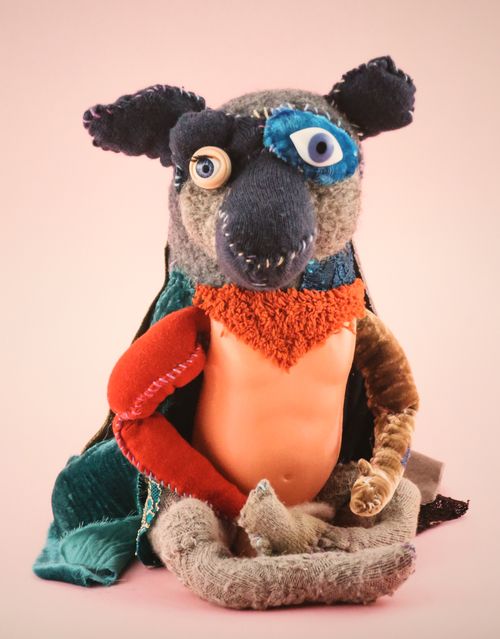Contemporary art between the past and the future
Ukraine has now its own biennale for young artists
This event was initiated by the Ministry of Culture. Mystetsky Arsenal will be displaying 67 winner projects of the first Festival of Young Ukrainian Artists until October 29 as part of the exhibit “The Today that Never Came.” At the same time, the educational program will continue.
Although the “biennale of contemporary art” had just begun, it has already caused quite a stir among “the broad artistic masses.” The last time the state initiated a high-profile contemporary art event was as far back as 2012. It was also a biennale at Mystetsky Arsenal. But it was for the most part foreign authors who took part in that international project. Arsenal never saw the second “issue” in 2014.
The Festival of Young Ukrainian Artists, organized by, among others, the National Art Museum (according to the museum director Yulia Lytvynets, the biennale will help them establish the Museum of Contemporary Art), is based on entirely different principles.

“The main goal of the Biennale is to encourage the state to support young artists, help young talented artists to realize themselves in the sphere of contemporary visual and photographic art, preserve and increase Ukraine’s intellectual potential, and popularize contemporary art among the broad strata of the population,” the contest regulations say. Only Ukrainian young artists aged up to 35 will take part in the contest. The curators are Ukrainian (Lizaveta Herman, Maria Lanko, and Kateryna Filiuk), while the jury is composed of both Ukrainians and foreigners. Well-known experts have screened 394 applications from the authors who reside in various cities of Ukraine and abroad.
The curators have suggested an almost all-embracing theme of the “main” exhibition: “The Today that Never Came.” There seem to be no constraints at all for creative fantasy in the gap between the past and the present, between memory and “alternative” history. The artists were free to show their worth in full.

However, neither an almost unbounded artistic freedom, nor the authority of jurors, nor the scope and degree of the presented exposition could not save the Biennale from criticism. Facebook abounds in adverse comments – from “total conformism and unoriginality of content” to “completed art project.”
When else can you see in Ukraine such a big and rather realistic, in our view, “profile” of young visual art? Perhaps never. We have been complaining for years about the “absence of new names.” Now we have a possibility to draw certain conclusions about the true essence of the hitherto unseen “next” generation of art. (“Why are there no paintings at all at the exhibit?” I ask curator Filiuk. “Nobody paints,” she says with a sigh.)
What is the contemporary art of Ukraine supposed to be like? It is a very positive fact that a widely-discussed major festival of national art has taken place.

As for the works exhibited by 67 participants, there are no those of outright low level. On the contrary, there are several super-class items. What is more, the best contest projects also have an ethnic coloring and are “very topical” for present-day Ukraine.
What particularly impressed us is “Cynocephali of the Donbas” by Lia Dostalieva from Donetsk: a combination of photos and homemade toy dogs patterned on the photo portraits of current Donetsk migrants who live all over the world. The artist uses cute toys to broach the problem of the self-identification of Donbas people. Serhii Grigorian’s ironic installation “M.U.S.E.U.M. The Museum of Hutsul Astronautics and Robotics” also leaves an imprint on your mind: the artist invites you to conquer the Universe by means of… folk handicrafts. Also interesting, albeit more predictable, is “Genesis” by the Leopolitan Maksym Maksymov – monstrous insects and even skeletons of dinosaurs, monsters, and military hardware assembled from dried plants or animals’ bones. Petro Hronskyi’s installation “Glacier,” where the old Soviet-era furniture, which can still be found in many homes, has turned into blocks of ice that are rushing on you, also attracts spectators with mild self-irony and reflections on the impact of the past on the present day. “The past is forming us and even our esthetic likings,” the artist explains.
Newspaper output №:
№61, (2017)Section
Time Out





